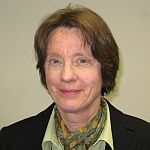 (Host) Thanks to a new audio-enhanced exhibit in the just completed
(Host) Thanks to a new audio-enhanced exhibit in the just completed
Coolidge Museum and Education Center at the President Calvin Coolidge
State Historic Site in Plymouth, summer visitors can now hear the sound
of his recorded voice. Commentator Cyndy Bittinger is a teacher, writer
and historian who thinks it’s about time.
(Bittinger) Coolidge was said to be a man of few words. In fact, the nickname he’s come to be known by was "Silent Cal."
But
Coolidge was an excellent communicator. In his day there were newsreels
with subtitles, newspapers with pictures, and speeches magnified with
amplifiers for the crowd. What’s more, only four months after he became
president upon the death of Warren Harding, Coolidge spoke on the radio.
It was a recent invention and he was just the second president to do
so. And during his years in office, from 1923 to 1929, he gave an
impressive forty radio addresses.
Yet until recently, visitors
to his birthplace in Plymouth haven’t been able to hear for themselves
how very articulate our 30th President really was. Now, they can.
On July 4, 1920, Vice Presidential Candidate Calvin Coolidge began a speech on equal rights with these words:
"July
4, 1776 was the historic day on which the representatives of three
millions of people vocalized Concord, and Lexington, and Bunker Hill,
which gave notice to the world that they proposed to establish an
independent nation on the theory that all men are create equal, that
they are endowed by their creator with certain inalienable rights, that
among these are life, liberty, and the pursuit of happiness."
The
exhibit is entitled "More Than Two Words: the life and Legacy of Calvin
Coolidge" and allows us to hear much of what President Coolidge
actually said during his administration.
In addition, quotes
that Coolidge may not have spoken but wrote in his autobiography and in
letters from Massachusetts or Washington to his father in Plymouth are
voiced by actor and Coolidge interpreter Jim Cooke of Boston.
The
exhibit room is vivid and exciting, with narration monitors that have
text and period images as well as flip books where visitors can touch a
screen and turn pages.
There are actual photographs of the 1928
White House, including settings for performances by such greats as
Sergei Rachmaninoff, as well as more familiar images of the young farm
boy who attended a one room school house, Black River Academy in Ludlow,
and Amherst College. There’s also a chest of drawers the young Coolidge
crafted with his own hands, as if to prove he wasn’t above using his
creativity in traditional ways.
Young visitors seem especially
to enjoy the "Ask the President" interplay, in which the viewer asks a
question – from a selection of thirty – and actor Cooke answers with
Coolidge’s own words culled from appropriate documents.
While I was there, one young girl kept asking repeatedly, "Why are you called Silent Cal?" The
answer was, " Washington is a city of conversation. I never was much
for small talk. I found that what you don’t say, never hurts you."
I wondered if she simply might not understand the answer – since today’s politicians don’t often follow that sage advice. But to Calvin Coolidge, criticizing your opponent just wasn’t the thing to do.